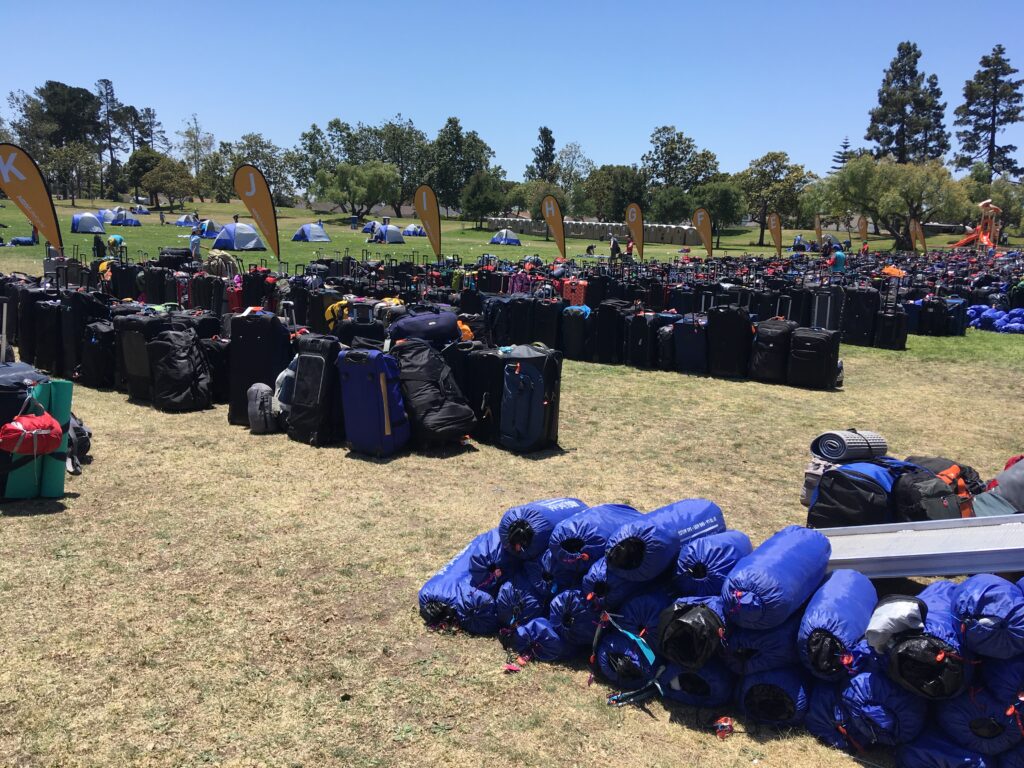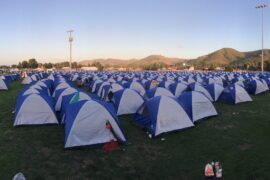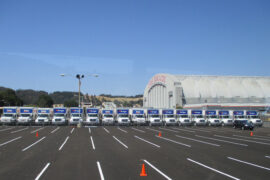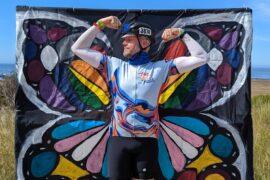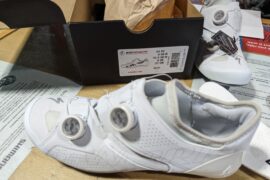Exactly how much stuff do I need to bring? TIs a rather common question. The answer is kind of like analyzing Schrodinger’s Cat; not much, and a ridiculous amount at the same time. Bottom line, you are gonna need a bigger bag.
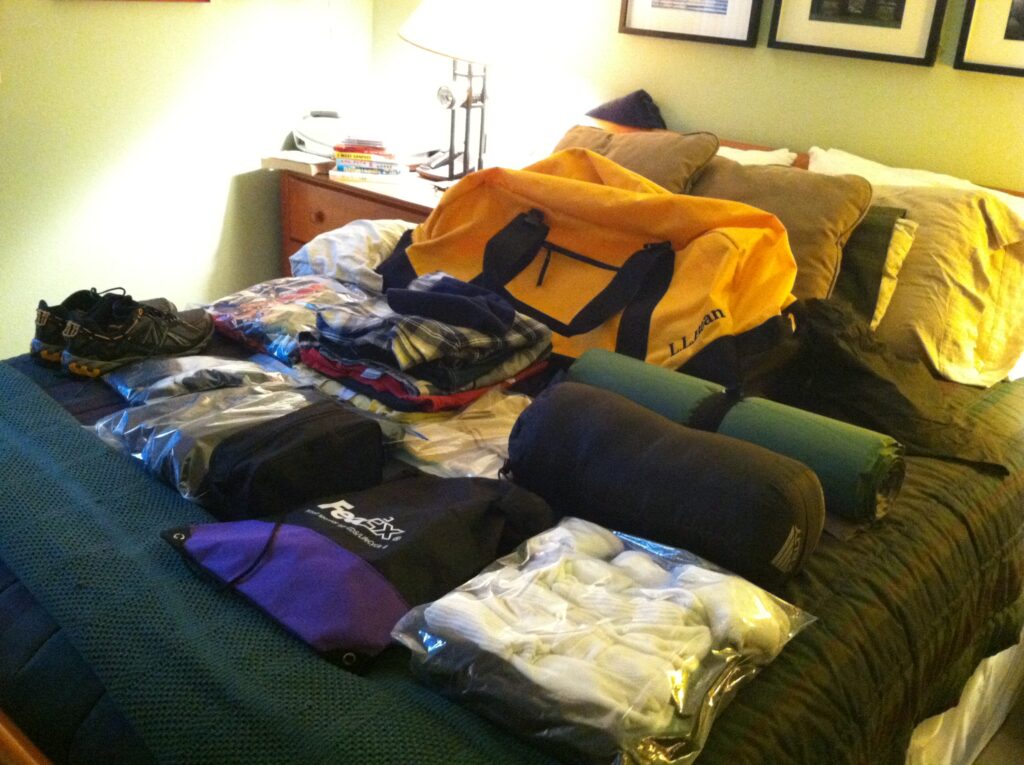
Let’s start with the not much part. For life in camp you will need a lot less than you think. You will only be wearing things for a few hours and you want to keep this down. Just be prepared for pretty much any weather condition. True, it has never snowed, otherwise we have pretty much hit it all. Expect cool, windy afternoons and cold evenings and mornings, so a warm hoodie type layer is essential. It is almost universally close to 48 degrees in the morning, if that helps you plan. It can be a damp cold as well.
The ride asks that you limit your baggage to 70 pounds or less. You should be able to do that very easily. My tentmate on my first ride, California AIDS Ride 3 brought a bag that weighed in at 107 pounds. He was traveling in a government surplus coroner’s body bag. I did not make that up.
For camp wear I bring the following:
1 Pair of walk shorts
1 pair of pants or jeans.
2 or 3 t-shirts.
2 or 3 long sleeve t-shirts. (Layering is key in camp. )
A substantial hooded sweatshirt.
A pair of flannel PJ pants. These can fill in for pants, but having two options for garments that are that close to the potentially wet or muddy ground is not a bad idea.
Socks and undies. 6 pairs. These I don’t compromise with. It’s my luxury splurge.
Hat or beanie.
A light pair of sneakers and shower flip flops.
For riding:
Bibs or shorts. 2 to 7. If I can, I bring 7 kits, including the ones I wear on Day 1, of course. I recommend trying for at least 5. Days 3 and 5 are good for laundry, since they are shorter and there is a reasonable chance they will dry. (The key word here being “chance”.) Jerseys dry way, way faster than shorts, of course. Pro tip: If doing laundry in camp, make sure you have a dry replacement for the next day, in case things don’t dry by bedtime. (Bring them in over night so the dew does not wreck all of your hard work.) You can always pack them in a ziploc and hang ’em out again at the next camp.
Socks. Clean ones every day. Seriously. At least wash ’em out if not. Seriously. Ew.
Jerseys. See above, but remember, this is your chance to strut the runway…
Don’t forget, Day 2 is Safety Orange day, where you get to dress like a traffic cone, and Day 5 is Dress in Red Day, where you get to dress like Jessica Rabbit if you want
Base layers. I have 4 , These are light and dry crazy fast.
Arm warmers. 2 pairs can’t hurt.
Knee warmers. 2 pairs can’t hurt.
Gloves. 3 pairs can’t hurt. Face it, these things get really gross…They do dry fairly fast, though.
A wind vest or scrunchable riding jacket. It will be cool every morning but can get very, very hot later on some days, so be prepared for big temperature shifts. Often more than once in a day. On my first ride on 1996 it went from the typical, cool morning to 117 degrees on the tarmac. I am not making that up. I would bring a rain cape as well. We have been soaked quite a few times on this event. Did I just say rain cape? I have been watching the British GCN youtube channel way too much…
Cycling sunglasses. Having good sun protection and eye coverage is really important out there. The Salinas Valley is as dusty as a location shoot from Dune.
A compact wallet to bring ID, Insurance card, emergency contact info, credit card, cash and the nuclear launch codes.
A saddle bag with the essentials for the day; a spare tube, multi -tool, tire levers, CO2 cartridges and inflator if you use them. (Don’t bring cartridges on the plane!)
Frame pump
Other essential accessories:
Light. A miner’s style headlamp is perfect.
Extra batteries for said light.
Sleeping bag and an air mattress or Therma-Rest type pad. A small pillow is also nice.
Clothespins or clips for hanging up your laundry.
Ear plugs if you are sensitive to noise when trying to sleep.
A pack towel. These are light microfiber towels you can get at any camping store. They work well even if damp and they stow away in a ziploc with ease. Don’t bring a regular bath towel. It will never dry and by Day 4 your entire bag will be a most unpleasant science project.
A small amount of cold water detergent if you will be doing laundry in camp.
Ziploc bags. Your bag is coming off the gear truck, rain or shine, and these will keep your clothes dry and organized. You can pack each day’s kit in one and you are set each day. Target almost always has the 2.5 gallon size. (I am not being compensated by Target. I wish.)
Personal toiletries. Go for the travel size of everything. Keep that weight down!
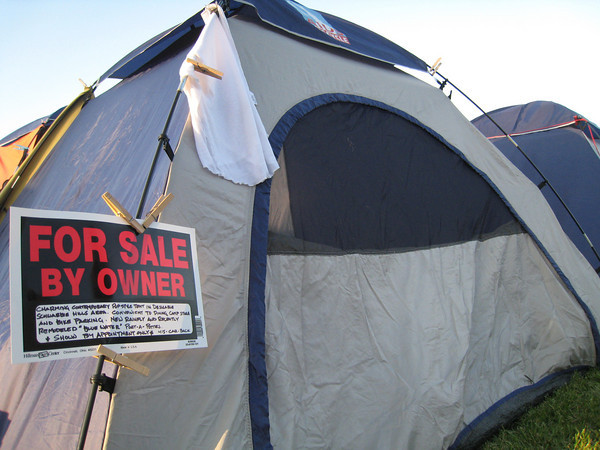
Something fun to personalize and mark your tent. They all look alike out there. Row, after row, after row. One year I put my tent on the market. Got some laughs and 4 good offers…
Power. The ride does provide a charging tent, but it can be difficult. I have a 20,000mHa brick that gets me through the week brilliantly, charging both my Garmin and my phone. The Cappuccino maker is a whole other story…
Medication. Again with the ziplocs and/or plastic pill keepers.
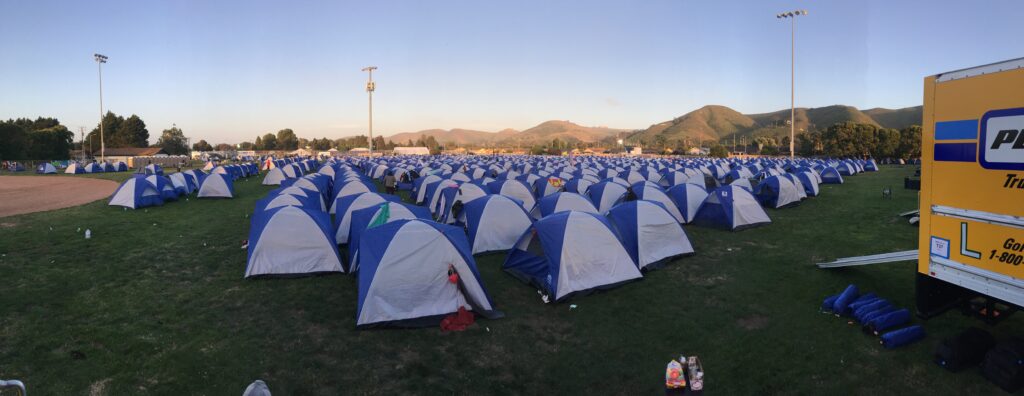
Some other things to consider:
You will likely want something clean to wear after the ride and to go home in the next day. If someone is meeting you they can bring that stuff. If not, and you are staying in a hotel, try shipping a box by FedEx or UPS ground with clean clothes to yourself as a guest of the hotel. Be sure to put your name and the date of arrival on the box. Clear that one with hotel first, too,
Hopefully FedEx is going to be in camp at least one night during the week. Shipping home the dirty stuff you are not going to use any more is a great way to lighten your load and make packing up in the morning easier. This crap gets bigger every day. They usually try to shut the shipping desk down by 6:00pm, so keep that in mind. There will be lines.
Try to get a duffel bag that fits everything inside. If you need to attach something PLEASE DO NOT use bungee cords. Those can easily injure a gear truck roadie. Use good webbed camping straps, but remember; anything on the outside of your bag is going to be the first thing to get moist in the event of rain.
Highly recommend that your bag have wheels. You will likely be dragging that thing a quarter of a mile or more from the trucks to your tent site. I got a great rolling duffel from LL Bean that has held up well. My bag is enormous because I insist on carrying a full pillow, but it is usually well under 50 pounds. Da Kine makes bags that are popular with riders as well.
Now that we are all packed, let’s start talking about the route. Next up, Day 1!
Feel free to hit me with questions in the comment section below.

